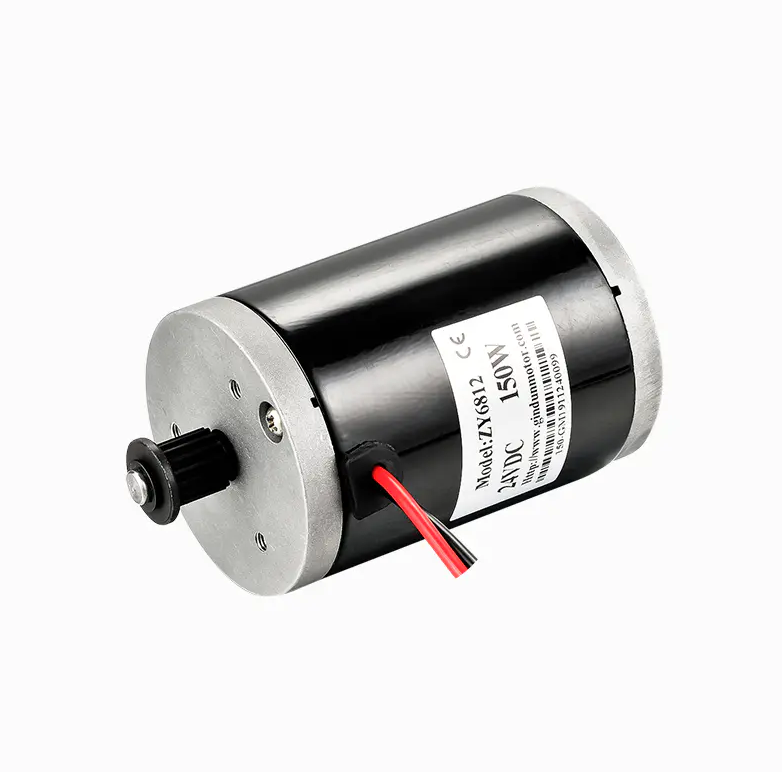The Influence of Temperature on Permanent Magnet DC Motor Efficiency

The performance of Permanent Magnet DC Motors (PMDC) is a critical factor in a multitude of applications, and understanding how temperature influences their operation is essential for their effective use. PMDCs are widely employed in various industries due to their high efficiency and power density, but their performance can be significantly affected by temperature variations. This article will explore the intricate relationship between temperature and the performance of PMDCs.
Temperature plays a pivotal role in the performance of Permanent Magnet DC Motors due to its impact on the motor's magnetic properties, electrical characteristics, and mechanical integrity. At the heart of a PMDC is the permanent magnet, which is typically made from materials such as neodymium or ferrite. These materials exhibit changes in their magnetic properties with temperature, which directly affect the Permanent Magnet DC motor's performance.
In the case of neodymium magnets, which are known for their strong magnetic field, the Curie temperature is a critical point. As the temperature approaches the Curie temperature, the magnet's coercivity and remanence decrease, which can lead to a reduction in the Permanent Magnet DC motor's torque and efficiency. Beyond the Curie temperature, the magnet's magnetic properties can be permanently demagnetized, rendering the PMDC inoperative. Therefore, it is crucial to ensure that PMDC applications do not exceed the maximum operating temperature of the magnets used.
Ferrite magnets, while less powerful than neodymium, have a higher resistance to demagnetization due to their lower Curie temperature. However, they too are affected by temperature changes, though to a lesser extent. The performance of Permanent Magnet DC Motors with ferrite magnets will degrade more slowly as temperature increases, but there will still be a point where the Permanent Magnet DC motor's efficiency becomes significantly impaired.
Electrical characteristics of PMDCs are also influenced by temperature. The resistance of the Permanent Magnet DC motor's windings increases with temperature, which can lead to higher power losses and reduced efficiency. Additionally, the back EMF, which is crucial for motor control, can be affected by temperature changes, altering the motor's speed-torque characteristics.
Mechanical integrity is another aspect of PMDC performance that is affected by temperature. The expansion and contraction of materials due to temperature changes can cause misalignment and increased wear on bearings and other moving parts. This can lead to reduced motor life and increased maintenance requirements.
To mitigate the effects of temperature on Permanent Magnet DC Motors, various cooling methods can be employed. These include air cooling, liquid cooling, and the use of heat sinks. By managing the heat generated within the Permanent Magnet DC motor, its performance can be maintained within an acceptable range, even under varying temperature conditions.
In conclusion, the performance of Permanent Magnet DC Motors is intricately linked to temperature. Understanding these relationships is crucial for the design and operation of systems that incorporate PMDCs. By considering the thermal characteristics of the Permanent Magnet DC motor and implementing appropriate cooling strategies, the performance of PMDCs can be optimized, ensuring reliable and efficient operation across a wide range of applications and environmental conditions. It is through this comprehensive approach that the full potential of Permanent Magnet DC Motors can be realized, making them a preferred choice in many industries where performance and reliability are paramount.
Key Features:
1. Permanent magnet design: The motor incorporates permanent magnets that generate a strong magnetic field, resulting in higher torque density and improved overall efficiency.
2. Brushed technology: This motor utilizes traditional brushed technology, making it easier to maintain and repair. It also ensures smooth communication, providing reliable and consistent performance.
3. Compact and lightweight: The compact and lightweight design of the motor allows for easy integration into electric scooters, without compromising on performance or functionality.
4. Wide speed range: The motor offers a wide speed range, allowing riders to choose their preferred speed for different road conditions and riding styles.
- Art
- Causes
- Crafts
- Dance
- Drinks
- Film
- Fitness
- Food
- Juegos
- Gardening
- Health
- Home
- Literature
- Music
- Networking
- Other
- Party
- Religion
- Shopping
- Sports
- Theater
- Wellness


